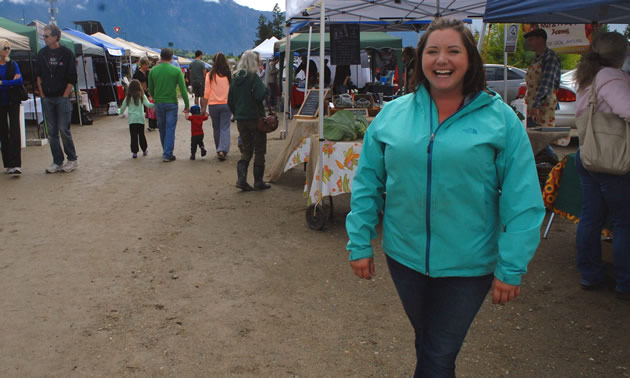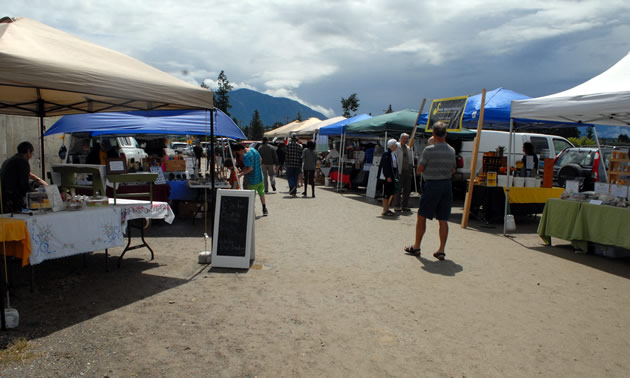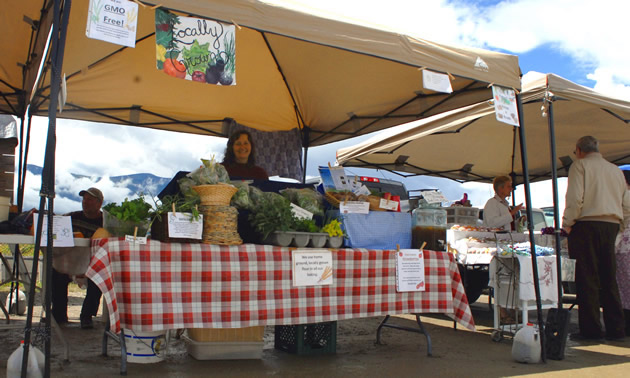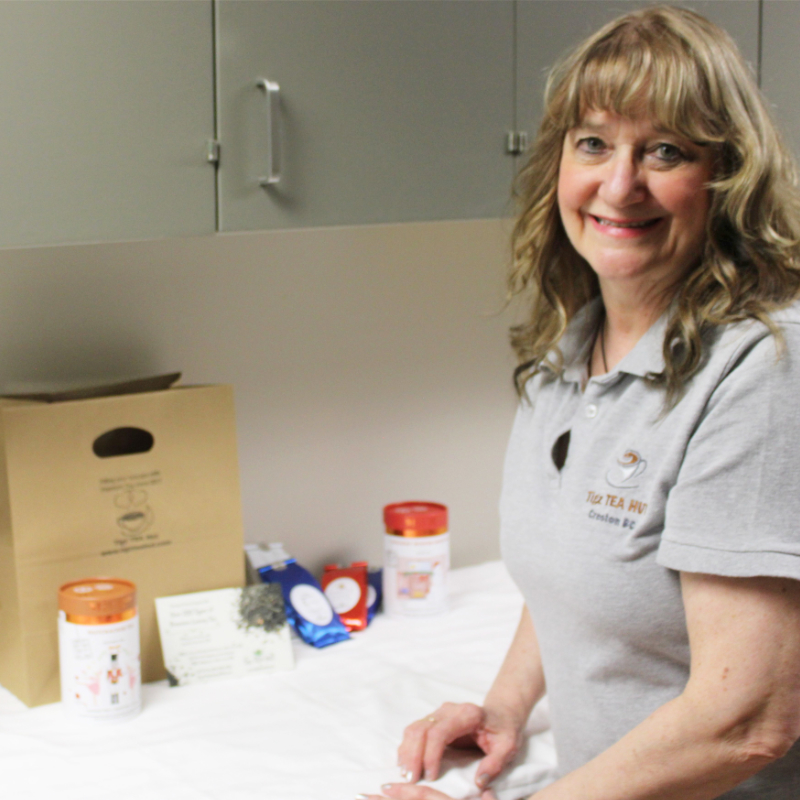Growing a local farmers market
The Creston Valley Farmers' Market has established itself as an important economic mainstay in an agricultural area
“People are craving connection—real connection,” said Jen Comer. She’s the manager of the Creston Valley Farmers’ Market. “They’re wanting to meet the people who are behind their food and who are behind the art on their wall. It’s such an exciting time.”
The Creston Valley Farmers’ Market is in its 11th year this season and has certainly been a success story for the agricultural-based town. Over the last decade the market has grown from a handful of vendors and now regularly hosts over 30 in the spring and close to 50 in the summer season. It has operated under the direction of the Creston Valley Food Action Coalition (CVFAC) since 2010, which is the year that Comer first came on board.
2010 was also the first year the Creston Valley Farmers’ Market benefited from a business development plan. The CVFAC and a group of key individuals came in asking questions about risks and opportunities while building relationships with the surrounding communities, essentially laying the groundwork for the sustainability of the market. That first year the CVFAC collected about $12,000 in stall fees, a number that grew to $22,000 the following year. The growth has brought the Creston Valley Farmers’ Market close to its goal of being financially self-sufficient.
A growing success
Today the Creston Valley Farmers’ Market has found a new home next to the chamber of commerce, directly off of Creston’s main street. Comer is working with the Town of Creston on a long-term plan to develop a permanent space for the market and has established landscaping plans for the area. In October the market moves into Morris Flowers & Greenhouses until Christmas, giving it one of the longest regular seasons for a farmers market in the Kootenays. Comer has also recently redeveloped a Creston Valley Farmers’ Market website, which will make the application forms available online. She has seen the market bring a vibrancy to Creston, a trajectory that she believes can be continued.
“There’s such a rural revitalization happening right now with so many young and new people moving into the valley and really embracing this sense that we can create this thriving, vibrant community to live in,” said Comer. “There’s just so much energy and excitement in Creston right now. We live in such a beautiful area, let’s really take advantage of it and come out and celebrate what we have instead of feeling like we don’t have it. The farmers market really comes to showcase all of the amazing talent that we have . . . It is really the only space of its kind in Creston.”
Local integrity
Everything at the Creston Valley Farmers’ Market has to be made, baked or grown by the person doing the selling. It’s a mandate set out by the B.C. Association of Farmers’ Markets that the Creston market follows closely. Additionally, the Creston market supports local farmers by regulating that all produce being sold is grown within the Creston Valley. The variety of food products available on a Saturday in Creston is impressive. Many of Creston’s larger commercial producers are now represented at the weekly market alongside smaller growers. Tarzwell Farms brings naturally grown meat from its provincial abattoir, B.C.’s largest asparagus producer, Sutcliffe Farms, offers its produce in season, and Tabletree Juice sells their World Juice award-winning products.
“It is really important for the consumers to be able to see the person who’s directly behind the product,” said Comer. “We think that that personal connection is really important for consumers. And they’re asking hard questions about where their food and products are coming from. Part of our role is to make sure we maintain that integrity so customers can have the opportunity to ask those questions.”
Making an impact
In 2012 the Creston Valley Farmers’ Market participated in an economic impact study with the University of Northern British Columbia. Customers were asked about their spending using the same standardized method that was used around the province. The results estimated that the local Creston market contributes $1.72 million to the local economy every year. Comer has enjoyed watching local farmers increase their production, work on their business models and create more jobs thanks to the demand for local produce and opportunities provided by the local farmers market.
Comer believes the local market success has largely been a result of community networking and partnering with many different organizations. There’s also been a balance of organization and flexibility.
“For us it’s meant a lot of planning and very deliberate actions,” said Comer. “We work closely with the town and the chamber of commerce. Everything that we do is very thought out and very intentional. But, by the same token, you have to be open to a lot of flexibility and spontaneity and local chaos. So it is about planning and then just rolling with the wave.”









Comments